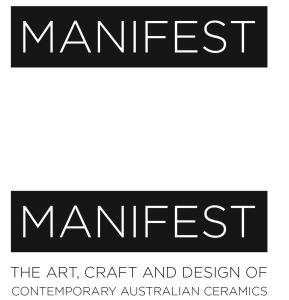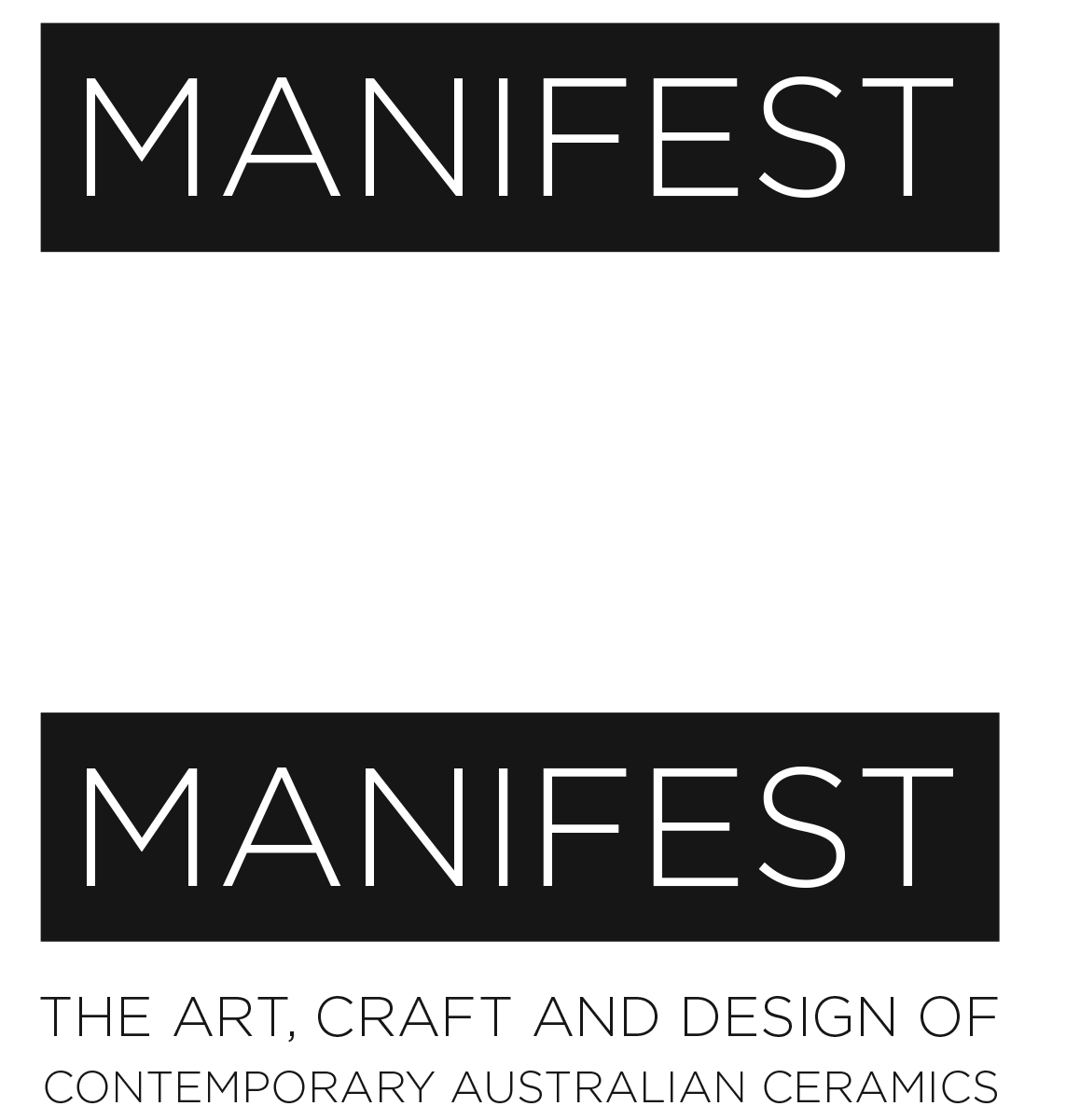Manifest
 Damon Moon is guest curator of Manifest – the art, craft and design of contemporary Australian ceramics, the Australian Ceramics Association Biennial Exhibition 2019 to be held in conjunction with Holding Space/Making Place, The Australian Ceramics Triennale to be held in Hobart, Tasmania in 2019.
Damon Moon is guest curator of Manifest – the art, craft and design of contemporary Australian ceramics, the Australian Ceramics Association Biennial Exhibition 2019 to be held in conjunction with Holding Space/Making Place, The Australian Ceramics Triennale to be held in Hobart, Tasmania in 2019.
Future Pots
In the 1980s the Contemporary Art Centre of SA hosted an exhibition of ceramics curated by Margot Osborne titled Thinking in Clay, where a group of Adelaide practitioners were encouraged to make new work that may be skirting around their current visual art practice. The most curious work in the show was a reconstructed replace with mantle which served as a shelf for a number of lidded ‘pickle’ jars which looked (to me) like ready-mades purchased from Bennett’s Magill Pottery. The work was made by Damon Moon and utterly unexpected and (a little) perplexing. Damon’s father is Milton Moon (who turned 90 this year) who, in case you didn’t know is a singular figure in Australian studio pottery. Milton’s oeuvre is varied with an aesthetic rooted in an Anglo Oriental approach. This is just a starting point for work which aims to re ect (or embody) an aesthetic that is informed by the light, colours, landscape and materials of this continent. It interested me that Damon would produce work that seemed so at odds with the influences of his upbringing.
A number of years later I was aware that Damon was making pots which were heavily informed by doctoral research for his thesis on Bernard Leach’s influence on Australian Studio ceramics. This research fed directly into his practice, evinced by the use of locally sourced clays and glaze materials and traditional Japanese-style hand-wheels to make his pots. This academic approach led to work which Damon said looked like “old Chinese or Japanese pots”. I have one of these pots, a small, greyish-white bodied shallow bowl with a matt white glaze. Although made from local materials (I think he called it a Parawa porcelain) and made (deftly) in Willunga, it could have been made anywhere in any time period and does have the qualities of “old Chinese or Japanese pots”. So I was surprised when I shuffled in to a theatre at a ceramics conference in Brisbane and Damon was waxing lyrical about ‘lesser’ modernist Australian ceramicists from the 1950s and 60s who made work which unashamedly embraced fashion and industry and whose European aesthetics were miles away from any ‘wabi-sabi’, Anglo Oriental approach. This was a clue of sorts of what was to come.
For the last eighteen or so months, whilst doing some work at JamFactory, I have observed Damon enthusiastically (almost gleefully) making new work. The outcomes are yet again unexpected and perhaps a reaction to the pared back, muted aesthetic that has driven his own work and the ceramics being produced at JamFactory for restaurants, clients and the public. There is a sense of freedom and play in these ‘future pots’ hitherto unseen in Damon’s work. Of course the work draws on his skill base, aesthetics and knowledge of materials but there are other forces at play here. This new work takes its cues from a particular strand of English modernist and European ceramics and from Modernist aesthetics generally. In some of the pieces there is a real sense of the idea of future pots, ‘new pots for a new world’. The forms are sculptural with the primary function of these pots being that of containment.
A pot made circa 1985 by English potter Robert Washington has played a key role in Damon’s thinking about much of the work in the show. Washington was a student of William Staite Murray in the 1930’s. Staite Murray positioned himself as an artist potter and exerted a great in uence on Washington, whose work was primarily concerned with the relationship between his angular bottle forms and abstract gural decoration. A particular pot of Washington’s, a stoneware vase titled & who the Pot, was made in the 1980s but could just as easily been made in the 1950s. In some ways it is an object ‘out of time’.
There is an echo of Washington’s angular forms in many of Damon’s pieces. They are muted yet challenging pots that force the viewer to question the very deliberate choices Damon has made regarding form, nish and the relationships between the pots. Although the pieces are hand formed (often separate forms assembled wet), the works are also informed by the processes and ethos of manufacturing. Some of the works seem to be in two parts with the neck and body playing o against each other exemplifying the contrasts in the formal qualities of the piece; dark/light, hard/soft, dry/metallic. These ‘future pots’ are playfully neo-modern, all at once looking backwards and striving forwards, projecting into the future while re ecting on the modernist past.
Gerry Wedd
* Title courtesy of Anna Maas.

